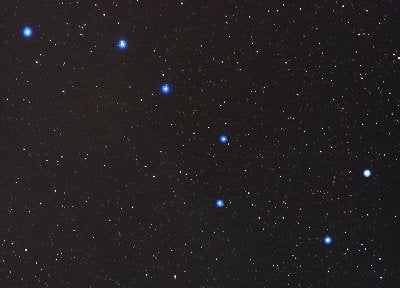Z Ursae Majoris is a semi-regular variable star that shuttles between magnitudes 6.4 and 9.3. That’s bright enough to be seen through binoculars throughout most of the cycle. Look for Z UMa, as it’s known, about 3° east of Megrez, the star that connects the Handle to the Bowl. (Remember, the Full Moon appears ½° wide.) Finder charts for both of these variable stars can be found on the American Association of Variable Star Observers (AAVSO) web site.
Ursa Major moving group — Few people realize that when they look at the Big Dipper, they are actually looking at the closest star cluster to Earth. In 1869, Richard Proctor, a British astronomer, determined that five of the seven stars in the Dipper — Merak, Phecda, Megrez, Alioth, and Mizar — all are about 75 light-years away and moving in the same direction through our galaxy. They are gravitationally linked to each other. Since then, at least another 11 stars have been found to belong to this rather scattered open cluster.
For more information on the Big Dipper, read Ken Croswell’s “Descendants of the Dipper” (Astronomy, March 2005).










